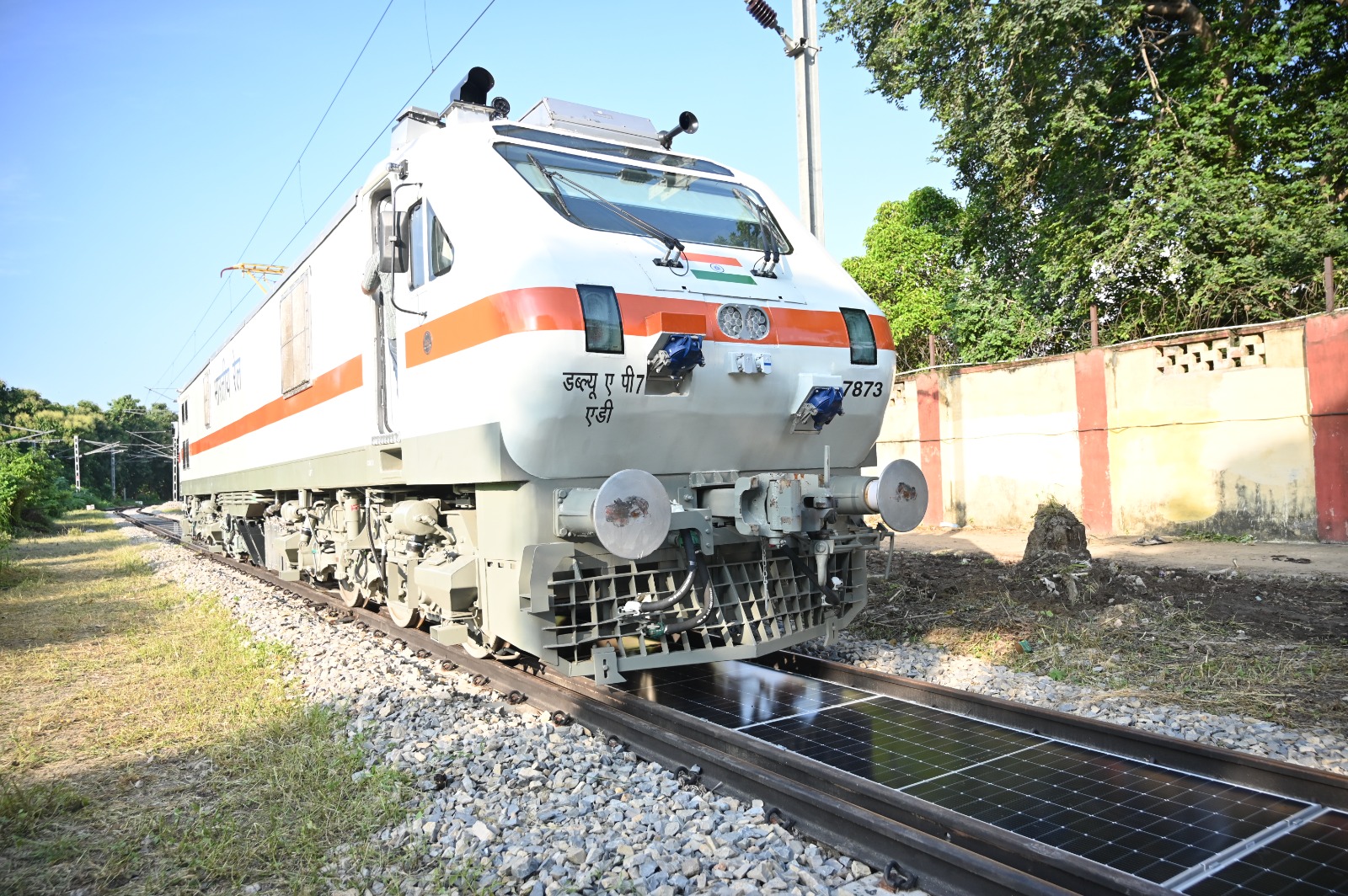Indian Railways made headlines recently by installing India’s first removable solar panel system between railway tracks at Banaras Locomotive Works (BLW), Varanasi. While the initiative is a milestone in green transportation, it also raises critical safety questions especially if this model is scaled nationwide.
So, what are the risks? What happens if animals or people interact with these panels? And how safe are they under real-world conditions? Here's a detailed explainer.
What Exactly Has Been Installed?
The project involves 28 solar panels spread over 70 meters, producing 15kWp of energy. These panels are installed between railway tracks and are removable, allowing maintenance crews to disassemble them when needed.
They are mounted with rubber pads and epoxy adhesives to withstand vibrations and minor shocks from passing trains.
What Are the Known Safety Measures?
Indian Railways has addressed some basic safety requirements:
- Rubberized padding to absorb shock and reduce damage.
- Flush mounting to align with track level, minimizing tripping hazards.
- Removable panels with SS Allen bolts for easy disassembly during track work.
However, these measures mainly focus on mechanical safety and maintenance not on human or animal interaction.
What If Animals Cross the Tracks?
India sees frequent animal intrusions on railway lines cattle, dogs, and even elephants.
Potential risks include:
- Damage to panels from trampling or collisions.
- Exposure of electrical components if panels crack or dislodge.
- Electric shock hazards, although the system is likely grounded and low voltage.
In protected spaces like BLW, these risks are minimal, but in open-track deployments, protective fencing or surveillance may become essential.
What If People Step on or Tamper with Them?
Human interaction can’t be ignored, especially where railway tracks are used as informal walkways or shortcuts.
Risks include:
- Tripping or falling, especially if the panels are slick or misaligned.
- Tampering or theft of panel parts in unsecured areas.
- Interference with emergency evacuation, where speed and mobility are critical.
So far, Indian Railways hasn’t announced plans for public awareness, protective covers, or signage, which will be necessary in urban or semi-urban areas.
What About Long-Term Durability?
While the Varanasi system is newly installed, globally similar projects have highlighted risks such as:
- Micro-cracks from weathering or load stress.
- Fire hazards from overheating or short circuits.
- Glare or reflection, potentially affecting train drivers' visibility.
Indian Railways has not yet released a technical audit or safety assessment report covering these possibilities.
What Needs to Be Done Before Wider Rollout?
For Indian Railways to scale this system nationwide, safety planning must go beyond structural design:
- Fencing or barriers in high-risk zones.
- Anti-skid surfaces for pedestrian safety.
- Tamper-proof, weather-resistant casings.
- Periodic inspections and real-time monitoring.
- Community education campaigns to avoid misuse.
These steps are vital to ensure that a green initiative doesn’t become a public safety liability.
Final Thought
The solar panel system at BLW Varanasi is a smart step toward a greener railway network. But as Indian Railways explores expansion, it must balance innovation with real-world safety. Careful planning, public involvement, and regulatory oversight will determine whether this initiative becomes a long-term success or a cautionary tale.


